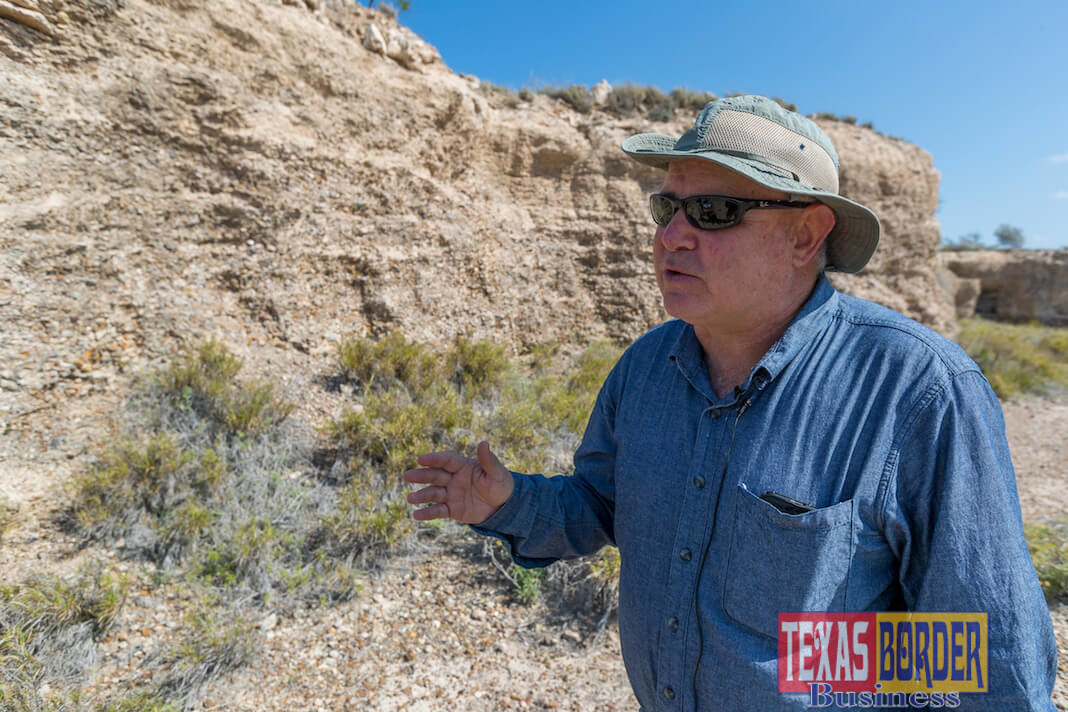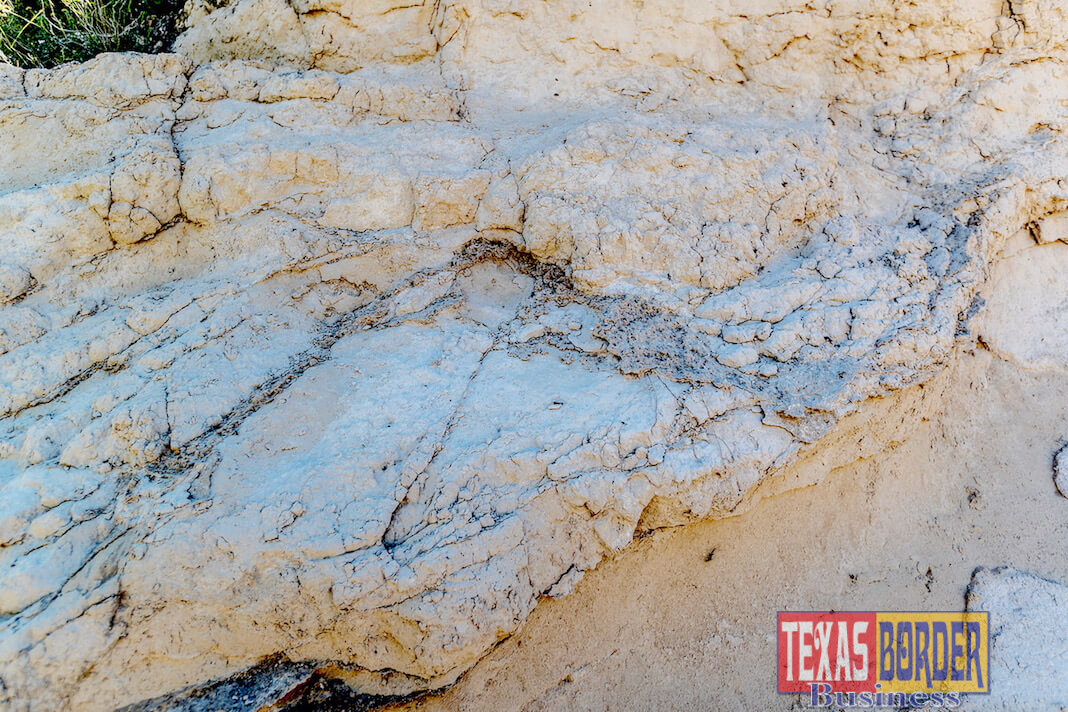
Texas Border Business
By Maria Elena Hernandez
Rio Grande Valley, Texas – For geologist Dr. Juan González, time travel is a simple road trip along Expressway 83.
“The further west you go, the further back in time you go,” said González, a UTRGV associate professor in the School of Earth, Environmental, and Marine Sciences (SEEMS).
The rocks on the UTRGV Edinburg Campus are 1.8 million years old. Traveling west into Starr County, you’ll hit the Goliad Formation, which is 5 million to 7 million years old. By the time you reach the Roma cliffs, you’re at what was a beach environment 43 million years ago.
“I was driving to the Rio Grande Valley from New Orleans (in 2009), and all I saw was flat coastal plain, and I figured there is not much here,” González said. “But shortly after, they took me on this field trip and it was an eye-opener.”
 That’s because González, a Quaternary geologist, could see volcanic ash along the formations, which are millions of years old.
That’s because González, a Quaternary geologist, could see volcanic ash along the formations, which are millions of years old.
Yes, volcanic ash. In the Rio Grande Valley.
“Now, do you know of any volcanoes nearby?” he said rhetorically.
“I started researching the literature for any information on the ash,” he said, “and nothing has been done. Nothing. I could not find a single reference to this outcrop.”
The sediment is now clay, he explained, but the clay originated from volcanic ash.
“This light color has a very unique composition. This was from a magma that was very viscous,” he said. “It could not flow. So when the caldera of the volcano exploded, it exploded violently.”
In fact, the explosion was so violent it left a layer of volcanic ash that’s 20 meters thick (almost 66 inches). And it did it in a single eruption.
“This clearly caused climate change,” González said. “Some species might have gone extinct.”
While González and his colleagues debate whether the ash fell within a few days or months, they have verified the age of the formation, called the Catahoula Formation. Two independent labs have calculated that the formation is about 27.2 million years old.
With that information, they’re working to find the source of the volcanic ash, which extends south into Mexico and north toward Three Rivers.
“We have good candidates. With that age, we can go back and see, based on previous work, what volcanoes were active at the time,” González said.
 However, the age verification of the Catahoula Formation with volcanic ash is part of another mystery. The Goliad Formation above it is 5 million to 7 million years old.
However, the age verification of the Catahoula Formation with volcanic ash is part of another mystery. The Goliad Formation above it is 5 million to 7 million years old.
So, what happened to the 20 million years between the two formations?
“We don’t know what happened,” González said. “Whatever was there was lost, washed away and lost for good.”
And while that may have disappeared, there is still much more research to do on the geological formations in the Rio Grande Valley, he said.
“We argue that when this ash was raining down, the shoreline must have been very close to where we are (in Starr County),” González said. “I’m interested in hopefully one day finding the fossil of a fish.”
Access to the geological sites is not limited to professors. UTRGV students also take field trips, usually at the end of a semester, to study the formations
“Clearly, there is a lot of interesting geology,” González said.
You can learn more about the research at the UTRGV School of Earth, Environmental, and Marine Sciences by visiting UTRGV.edu/SEEMS.












